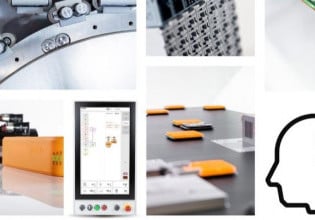Beckhoff Releases TwinCAT Cloud Engineering, New PC-Based Control Software for Industry 4.0
Beckhoff Automation's newest PC-based software system offers cloud and web-based access to the functionalities of their TwinCAT control products.
PC-based control systems have gained popularity over the last several decades. Their familiar interfaces and convenient hardware needs are attractive, especially to those who are working in green-field facilities.
Today, Beckhoff Automation introduced their newest PC-based control software, TwinCAT Cloud Engineering. The software is the newest addition to their TwinCAT product line and is dedicated to bringing cloud functionality to the automation space.
TwinCAT Cloud Engineering
The new software is geared towards Industry 4.0 and IoT applications. The TwinCAT software series has long been dedicated to allowing engineers to easily and efficiently manage large numbers of machines, systems, and processes in a clean interface. The new Cloud Engineering instances will allow the use of existing TwinCAT Engineering and Runtime products in a new way:
The introduction of TwinCAT Cloud Engineering allows users to access these functionalities via the cloud.

A simplified overview of the TwinCAT system. Image (modified) from Beckhoff Automation
It's important to note that engineers can utilize the program through a web browser. This means that they would be able to have the same functionality as their current TwinCAT system—even moving extent systems entirely—but utilize virtual machines remotely rather than local processing and storage.
One of the inherent benefits of this setup is that updates to software can be implemented in real-time by Beckhoff rather than requiring engineers to update their software manually (and sometimes piecemeal).
Another inherent benefit is the ease of use when collaborating with several engineers, especially across different facilities separated by physical space.
All told, Beckhoff Automation believes that the move to the cloud will allow for easier scaling opportunities for the industrial sector, relying on cloud resources for the ever-increasing amount of data gathered and analyzed in modern plant facilities.
The Cloud in Automation
Many engineers are hesitant to pursue cloud functionality in their facilities. Some may be concerned that integration would be a pain. Others fear the ramifications of an improperly implemented system—or a properly implemented system that opens their facilities to cybersecurity vulnerabilities.
Regardless of the various issues documented with cloud applications (latency, security, etc.), there's little doubt that there's intense interest in utilizing them for automation applications.
What's your perspective on using cloud storage or processing in automation? Share your thoughts in the comments below.






